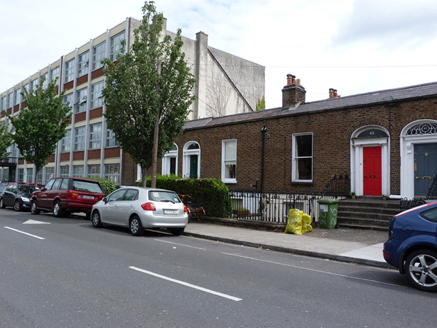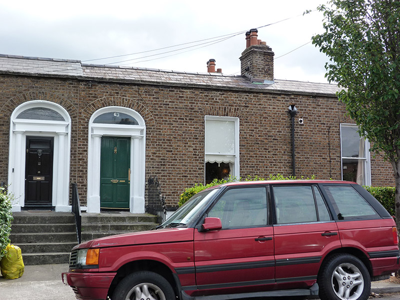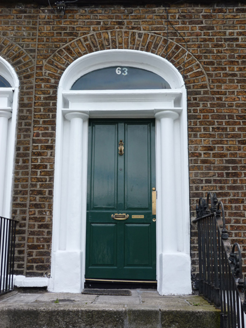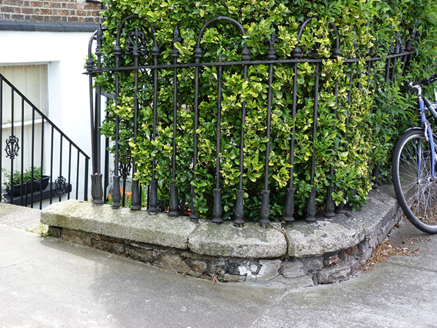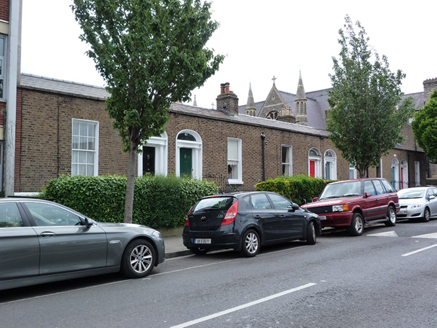Survey Data
Reg No
50110382
Rating
Regional
Categories of Special Interest
Architectural
Original Use
House
In Use As
House
Date
1830 - 1850
Coordinates
315418, 232825
Date Recorded
30/05/2017
Date Updated
--/--/--
Description
Terraced two-bay single-storey house over raised basement, built c. 1840, as one in terrace of six, having return to rear. M-profile pitched slate roof with brick parapet having cut granite coping, brick chimneystacks with clay pots. Brown brick, laid in Flemish bond, to walls, with masonry plinth course over lined-and-ruled rendered walls to basement. Square-headed window openings having rendered reveals and masonry sills. One-over-one pane timber sliding sash windows. Some timber panelled shutters visible to interior. Elliptical-headed door opening with moulded render surround, doorcase comprising Doric columns and stepped cornice. Plain fanlight, replacement door. Granite steps. Cast-iron railings with fleur-de-lis and anthemion finials, set on rubble masonry plinth wall with cut granite coping.
Appraisal
This house retains much of its original form, and is characteristic of suburban residential development dating to the mid-nineteenth century. Part of a terrace with similar proportions and features, it shares steps and return with the house to the north. The fine Greek revival railings with decorative anthemion heads are the work of a skilled craftsman. Originally New Bride Street, Heytesbury Street was renamed for William á Court, 1st Baron Heytesbury, Lord Lieutenant of Ireland from 1844-46. The street comprises a series of individual terraces, reflecting the speculative nature of its development in the mid-nineteenth century.
